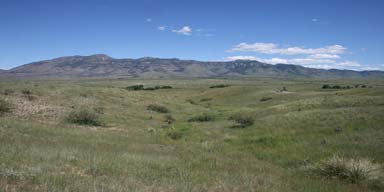 The Malpai Borderlands is cattle ranching country and ranching has kept it open for over a century. In the Southwest, ranching depends on the existence of large open space landscapes. To keep the land open and healthy, the Malpai Borderlands Group has concentrated its efforts in two areas: 1) Protecting the area from development through the acquisition of conservation easements. 2) Working to maintain natural processes such as periodic fire to keep the land healthy and resilient.
The Malpai Borderlands is cattle ranching country and ranching has kept it open for over a century. In the Southwest, ranching depends on the existence of large open space landscapes. To keep the land open and healthy, the Malpai Borderlands Group has concentrated its efforts in two areas: 1) Protecting the area from development through the acquisition of conservation easements. 2) Working to maintain natural processes such as periodic fire to keep the land healthy and resilient.
Over the past four years, in cooperation with the appropriate agencies, some 20,000 acres have benefitted from fire. This has been accomplished by allowing natural ignitions to burn within prescription, saving thousands of dollars in suppression costs as well as rejuvenating the grasslands. During the same period, the group acquired conservation easements on three more area ranches, bringing the total protected to 18 ranches and 88,000 acres of private land.
 These accomplishments took place as the group was undergoing some significant changes. In the past four years, six of our founding members have passed on. They are sorely missed, but the good news is that young ranchers and conservationists are stepping up to fill the breach. The only executive director the Malpai Borderlands Group has had retired in January, 2018, as did the finance coordinator. Fortunately, another local ranching couple stepped up and is doing a great job. The group also has a new science coordinator, starting this year.
These accomplishments took place as the group was undergoing some significant changes. In the past four years, six of our founding members have passed on. They are sorely missed, but the good news is that young ranchers and conservationists are stepping up to fill the breach. The only executive director the Malpai Borderlands Group has had retired in January, 2018, as did the finance coordinator. Fortunately, another local ranching couple stepped up and is doing a great job. The group also has a new science coordinator, starting this year.
The biggest threat to the area’s open space right now comes from the federal government in the form of nineteen miles of a 30 foot high wall with lights proposed for the border. It is neither wanted nor needed here. So far, construction has been stalled by the courts. This is the kind of top-down decision making, with no regard for local input, that always has negative results.
 Sign In
Sign In
 Sign In
Sign In
